ខ្យងជាប្រភេទសត្វមួយដែលមានរស់នៅស្ទើរគ្រប់លេខកន្លែង។ ពួកនេះមានទាំងប្រភេទដែលរស់នៅក្នុងទឹកសមុទ្រ ទឹកសាប និងលើដីផងដែរ។ ពពួកខ្យងមានប្រវត្តិយូរជាណាស់មកហើយ តាមរយៈការសិក្សាស្រាវជ្រាវលើភស្តុតាងមួយចំនួនពីផូស៊ីលកប់នៅក្នុងដី ឬថ្ម។ ពពួកខ្យងមានអាយុចាស់ជាង ៥០០លានឆ្នាំទៅទៀត បើយើងពិនិត្យទៅលើតារាងនៃការ វិវត្តន៍របស់ពពួកវា (រូបលេខ១)។ ការវិវត្តនៃពពួកខ្យងមានការរីកចំរើនជាលំដាប់ ពូជខ្លះក៏បានបាត់បង់ទៅវិញ ពូជខ្លះក៏បានក៏កើត និងខ្លះទៀតដែលមានតាំងពីយូរមកក៏បន្តមកដល់បច្ចុប្បន្ន។ ខ្យងជាប្រភេទសត្វ ដែលស្ថិតនៅក្នង សាខា (Phylum) Mollusca ដែលចែកចេញជាថ្នាក់ (Class) Bivalvia ដែលមានដូចជា លាស ងាវ គ្រំ… ថ្នាក់ Cephalopoda មានដូចជា ម៉ឹក Ammonite និងថ្នាក់ Gasstropoda ដែលជាថ្នាក់នៃពពួកខ្យងនេះ។ ថ្នាក់ Gasstropoda ត្រូវបានបែងចែកជាលំដាប់បន្តទៅទៀតទៅតាមរូបរៀង និងលក្ខណៈជីវសាស្ត្រ របស់ពួកវា (រូបលេខ២-៣)។ ក្នុងនេះផងដែរខ្ញុំសូមលើកយកពីប្រភេទខ្យងម្យ៉ាងហៅថា Bellerophon ដែលយើងបានរកឃើញនៅក្នុងប្រទេសកម្ពុជាផងដែរ។ ខ្យង Bellerophon ត្រូវបានរស់នៅក្នុងសម័យកាល Cambrian ( ៥៤២លានឆ្នាំ) បន្តមកកាន់សម័យកាល Triassic (២០១លានឆ្នាំ) ហើយក៏បានដាច់ពូជន៍។
តារាងវគ្គីសាស្ត្រ (Taxonomy)
| Kingdom រជ្ជៈ | Phylum សាខា | Class ថ្នាក់ | Order លំដាប់ | Family សណ្តាន | Genes ពួក | Species ប្រភេទ |
| Animal | Mollusca | Gastropoda | Bellerophontida | Bellerophontida | Bellerophon |
ខ្យងភាគច្រើនមានសំបកមិនស៊ីម៉េទ្រីនោះទេ ដែលមានសំបកវៀចទៅម្ខាងជាដើម។ តែចំពោះខ្យងពពួក Bellerophon មានសំបកស៊ីមេទ្រី ដែលមានលក្ខណៈប្រហាក់ប្រហែល និងពពួក Nautilus (រូបលេខ៤)។ គេបានរកឃើញពពួក Bellerophon មួយចំនួនដែលមានរូបរាងប្រហាក់ប្រហែលគ្នា តែខ្លះមានភាពខុសគ្នា តែវាស្ថិតនៅក្នុងទម្រង់តែមួយ (រូបលេខ៥-៧)។ ប្រភេទខ្យងនេះក៏ត្រូវបានរកឃើញនៅក្នុងប្រទេសកម្ពុជាផងដែរ នៅឆ្នាំ២០២០ ដោយក្រុមការងារសិក្សាផូស៊ីលនៃនាយកដ្ឋានតំបន់បេតិកភណ្ឌ អគ្គសហគមន៍មូលដ្ឋាន នៃក្រសួងបរិស្ថាន។ ខ្យងមួយបានរកឃើញនៅភ្នំស្វាយ ខេត្តបន្ទាយមានជ័យ (រូបលេខ៨) នៅតាមផ្លូវដើរឡើងទៅកាន់កំពូលភ្នំ ប្រហែលបែកចេញពីបំណែកថ្មកំបោរ ដែលគេវាយយកមកដាក់ជាកម្រាលផ្លូវ។ ខ្យងនេះវាមានទំហំ៦ស.ម រូបរាងស្ទើមូល មានស្នាមជារលកពាក់កណ្តាល ដែលខាន់ចែកខ្យងជាពីរជាលក្ខណៈស៊ីមេទ្រី។ ខ្យង(លេខលេខ៩) មានប្រភពមកពីភ្នំបាក់ ដែលបានរកឃើញកាលពីឆ្នាំ២០២០ផងដែរ វាមានទំហំតូចជាង ខ្យងលេខ៨។ ខ្យង(រូបលេខ១០) ក៏បានរកឃើញមកពីភ្នំបាក់ តែវាបែកជាពីរចំពាក់កណ្តាល ដែលយើងអាចមើលពីពំនុះកាត់នៃខ្យងទាំងមូលបាន។ ភ្នំបាក់ និងភ្នំស្វាយ ជាប្រភេទភ្នំថ្មកំបោរ ដែលស្ថិតនៅក្នុងសម័យកាល Permian មានអាយុកាលចន្លោះ (២៥២-២៩៩លានឆ្នាំ)។ ប្រសិនបើយើងប្រៀបធៀបខ្យងដែលយើងបានរកឃើញទាំងបី គឺមានលក្ខណៈប្រហាក់ប្រហែលគ្នា ខុសត្រង់តូចនិងធំតែប៉ុណ្ណោះ។ ខ្ញុំសូមប្រៀបធៀប រូបលេខ៧ ប្រភពបរទេស និងរូបលេខ៨ប្រភពភ្នំស្វាយ៖ លក្ខណៈដូចគ្នា មានភ្នីកណ្តាលពុះកាត់ពាក់កណ្តាលខ្យងបង្កើតបានជាអ័ក្សស៊ីមេទ្រី, ស្នាមឆ្នូតៗសងសាងដែលបង្ហាញពីការលូតលាស់របស់ខ្យង, ផ្នែកមាត់ខ្យងមានចុងស្រួចដែលកើតឡើងដោយទ្រនង់អ័ក្ស។ ភាពខុសគ្នា ខ្យងលេខ៧ មាត់មានលក្ខណៈធំជាង, ផ្នែកសងខាងនៃខ្យងលេខ៧ មានរន្ធមួយដែលអាចឱ្យយើងមើលឃើញគូទរបស់ខ្យង ចំណែកខ្យងលេខ៨ មិនមានរន្ធនោះទេ ជាហេតុធ្វើអោយយើងមិនអាចឃើញគូទខ្យងនោះទេ, ខ្យងលេខ៨មានលក្ខណៈមូលនៅពេលដែលវាកាន់តែធំ។ យើងមិនទាន់បានដឹងច្បាស់ថាវាដូចគ្នានឹងប្រភេទដែលគេរកឃើញពីមុន ឬយ៉ាងណានោះទេ? ចំពោះប្រភេទ (Species) យើងមិនទាន់អាចកំណត់បាននៅឡើយទេ ក៏ត្រូវការអ្នកជំនាញផ្នែកផូស៊ីលខ្យងជួយក្នុងការវិភាគផងដែរ។ តែយ៉ាងណានេះជារបកគំហើញមួយ និងជាទិន្ន័យក្នុងការប្រៀបធៀបជាមួយផូស៊ីលនៅបណ្តាប្រទេសផ្សេងៗផងដែរ៕
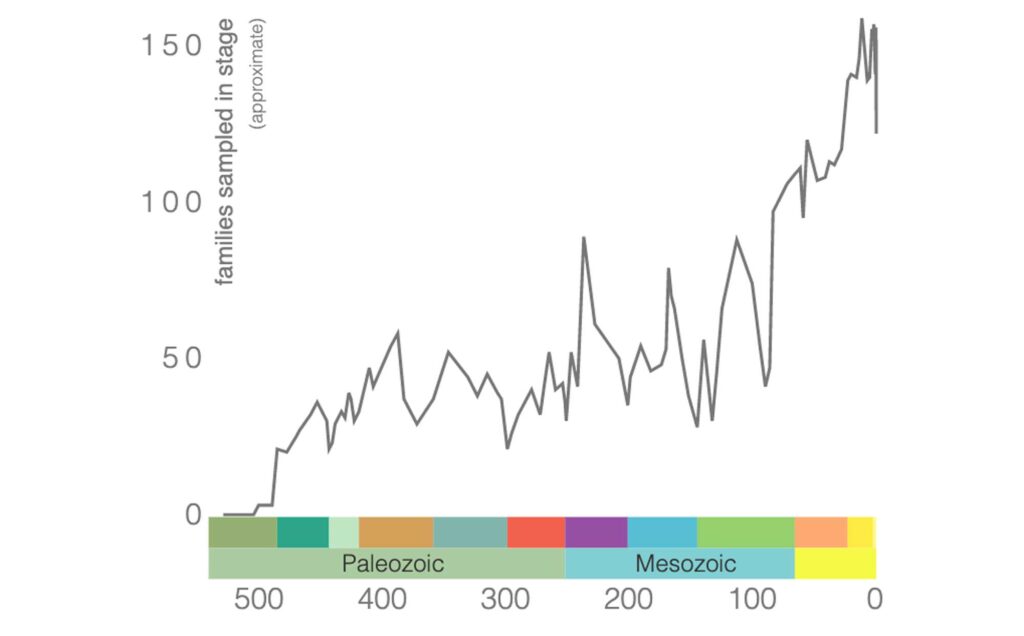
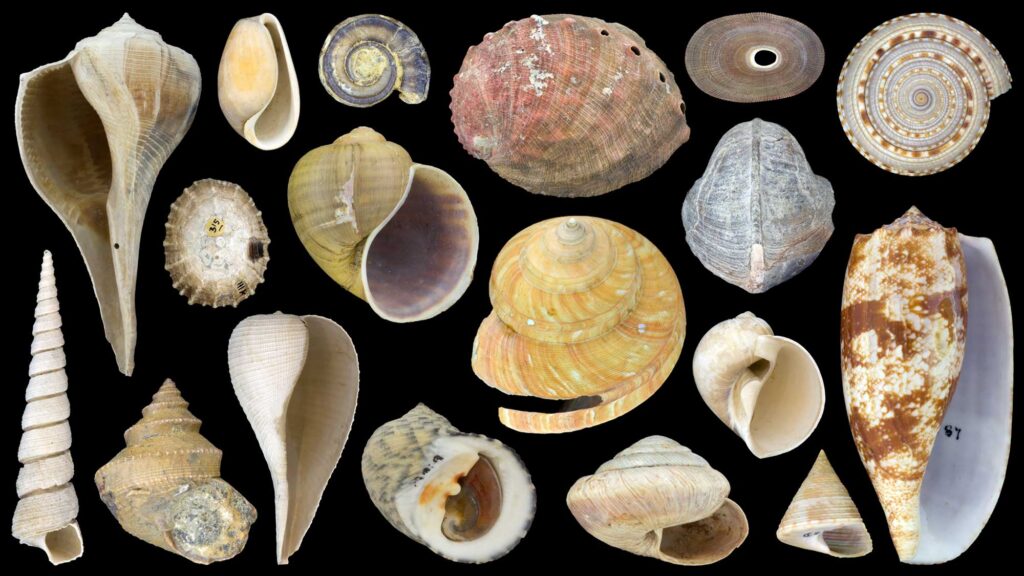




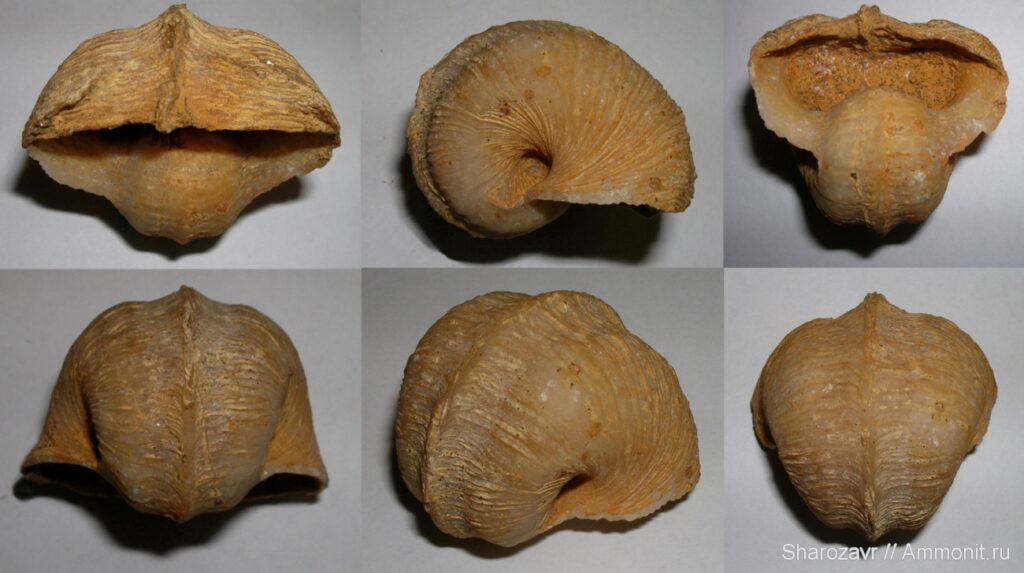
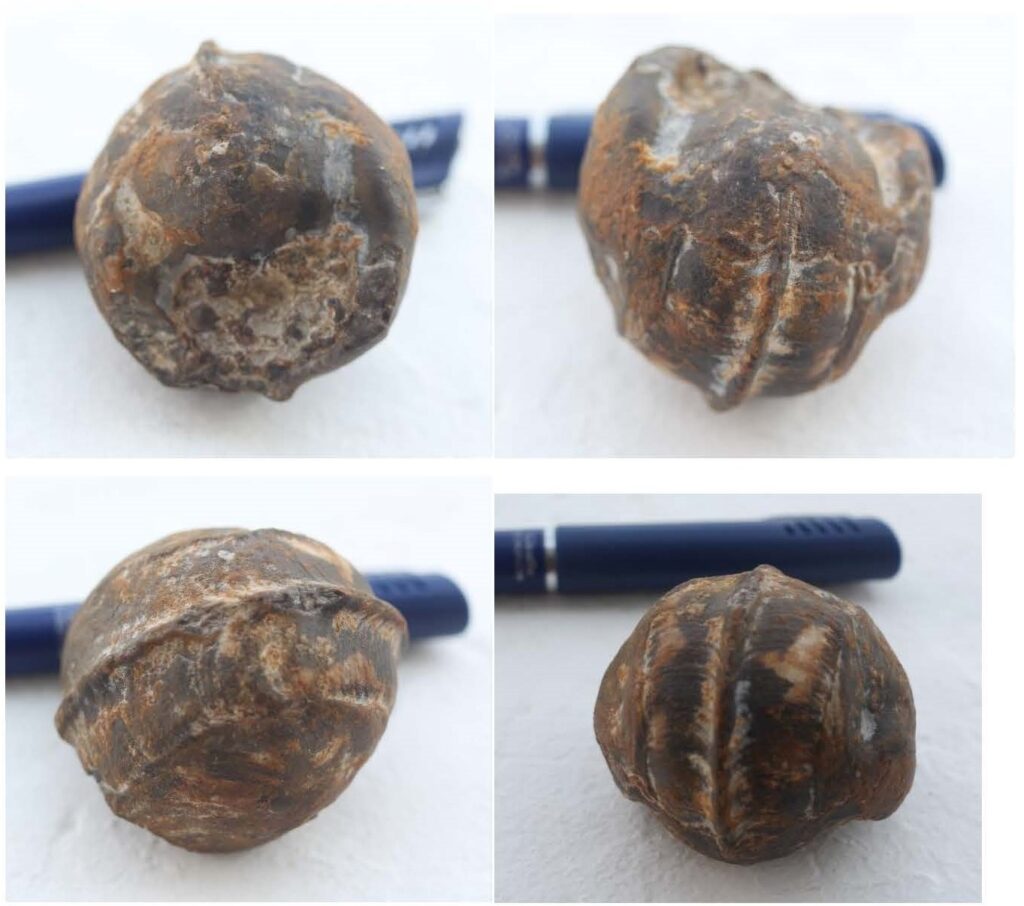
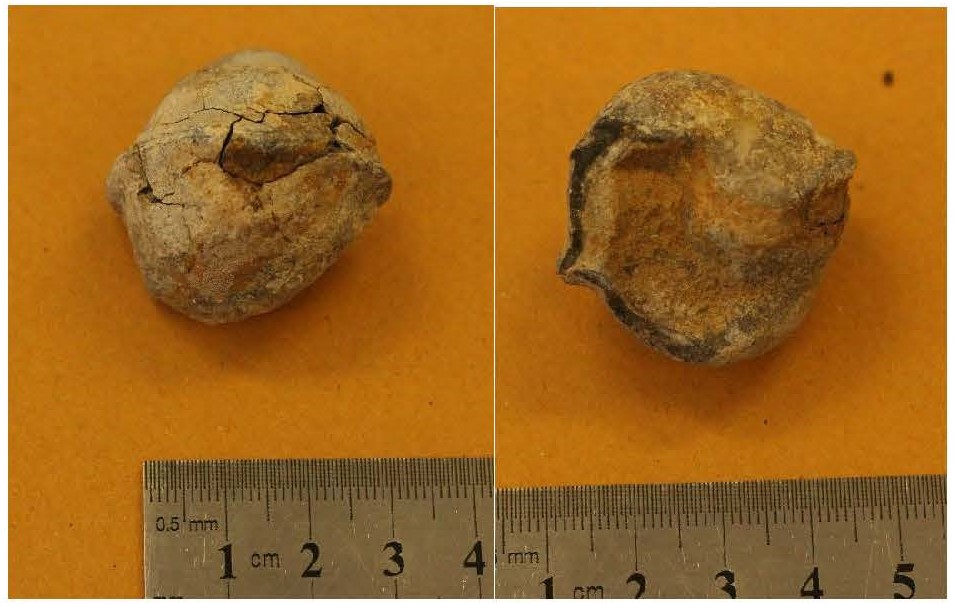

————————————–
Shell fossil in Bellerophon genes
Shells are a species that lives almost everywhere. These species live in sea, freshwater, and land. Shells also have a long history, based on the finding of some evidence of fossils buried in the ground and rock stone. These shells’ ages are more than 500 million years old according to their evolutionary list of the shells.
The evolution of shells has progressed steadily, some species have disappeared, some species have been born and some have existed for a long time and continue to the present. Shells are a species in the Mollusca phylum, which is divided into a Bivalvia class including clams, cockles, mussels, and so on. Cephalopoda class as Ammonite squid and Gasstropoda class, which is a class of shall. Gasstropoda classes are further divided according to their shape and biological characteristics. In this article would like to mention a shell species called Bellerophon that we found in Cambodia. Bellerophon shell lived in the Cambrian era (542 million years) and continued to the Triassic era (201 million years) and became extinct.
Most shells have asymmetrical shells cover curved to one side and so on. Bellerophons genes, on the other hand, have symmetrical shells cover similar to those of the Nautilus genes. A number of Bellerophons genes have been found that are similar in appearance but in the same form. This type of shell was also discovered in Cambodia in 2020 by the Fossil Study Team of the Department of Heritage zone, the Ministry of Environment. Shells were found in Phnom Svay, Banteay Meanchey province, on the way up to the top of the mountain. Shells were found in the fragments of limestone that broke it to pave the road. This shell is 6 cm in size, almost round in shape which divided the shell into two symmetrically. This shell originated from Phnom Bak, which was discovered in 2020. In addition, other shells have been also found from Phnom Bak. Phnom Bak and Phnom Svay are limestone mountains of the Permian era with dates between (252-299 million years). If we compare the finding shells at three sites, they are similar, only small and large.
In comparation shells from foreign sources with shells found in Phnom Svay, it is the same characteristics, forming an axis of symmetry, stripes on both sides showing the growth of the shell. The difference between shells from Phnom Svay is larger and different shapes than in other sites. Thus, we do not yet know for sure if it is the same as the previously discovered species. As for the species, we have not yet been able to identify it and need the assistance of a shell fossil expert to analyze it. However, this is a discovery and data in comparison with fossils in other countries as well.
អត្ថបទដោយ៖ លោក លឹម វណ្ណច័ន្ទ






